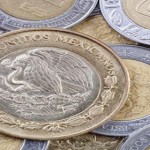Australian dollar received support against its US peer on Tuesday, following better-than-projected retail sales data out of Australia and as Reserve Bank of Australia (RBA) left its benchmark interest rate unchanged at its monthly meeting.
AUD/NZD rose to a session high at 0.9400 at 5:31 GMT, after which consolidation followed at 0.9393, gaining 0.74%. Support was likely to be received at September 13th low, 0.9224, while resistance was to be met at September 26th high, 0.9402.
The Australian Bureau of Statistics reported that retail sales in the country increased 0.4% in August compared to July, after the 0.1% gain in August. Experts had anticipated that sales will gain 0.3%.
Another report, by the Australian Industry Group (AIG), said that Australian PMI came in at 51.7 in the month of September, after the index stood at 46.4 in August. Values above the key level of 50.0 are an indication that manufacturing activity has increased and the more values distance from this level, the stronger the expansion appears to be.
Also, according to a survey by the Housing Industry Association (HIA), new home sales in Australia rose 3.4% in August compared to July, after sales dropped 4.7% in the preceding month.
Last but not least, the Aussie gained ground against all of its 16 major peers, following the decision by the Reserve Bank of Australia to leave its benchmark interest rate intact at the current record low level of 2.50% at its meeting in consonance with expectations. According to the central bank, its current monetary policy remained appropriate, as low interest rates will still provide support to the process of re-balancing the economy. RBA has decreased its benchmark by 225 basis points since November 2011. The latest interest rate cut was in August to the present level of 2.50%. The central bank again underlined, that it will continue to closely observe how economy performs and adjust its monetary policy in order to support a stable economic growth and an inflation rate close to banks target.
Another positive signal for the Australian dollar appeared to be the fact that, according to the China Logistics Information Center, the Chinese manufacturing PMI climbed to a reading of 51.1 in September from 51.0 in August. Experts had anticipated that the index will advance to 51.5. Values above the 50.0 level point that activity has increased. This data influenced the Aussie, because China is Australias largest export market.
The Aussie has appreciated 4.7% against the greenback in September, or marking the largest monthly climb since June 2012. Additionally, EUR/AUD cross was losing 0.65% to trade at 1.4426 at 6:45 GMT. AUD/NZD pair soared 0.75% on a daily basis to trade at 1.1311 at 6:45 GMT.





